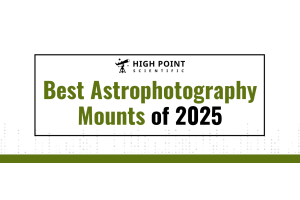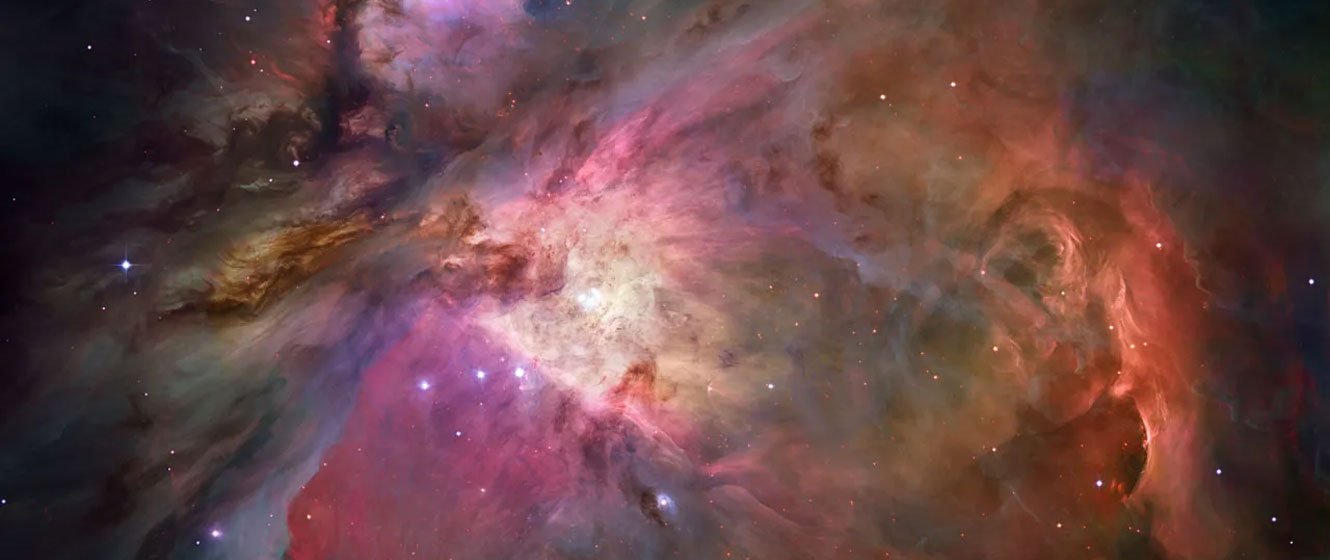
In this episode of What's in the Sky this Month, Teagan reviews some of the beautiful celestial objects you can see in the month of January 2023!
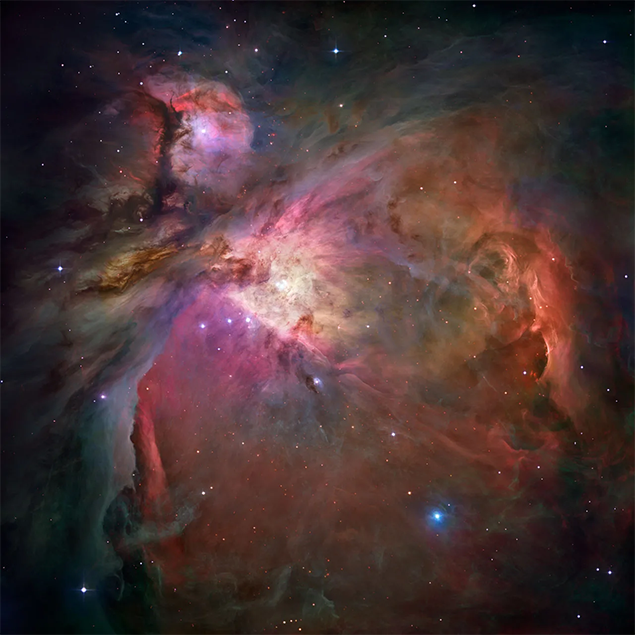
Image credit: NASA, ESA, M. Robberto (Space Telescope Science Institute/ESA) and the Hubble Space Telescope Orion Treasury
Project Team
The Great Orion Nebula
- Type: Emission and Reflection Nebula
- Constellation: Orion
- Distance: 1,344 light-years
- Magnitude: 4.0
The Great Orion Nebula is one of the best and easiest objects to locate. To find it, you only need to look beneath the three stars that form Orion’s belt. Even under suburban skies, you’ll see it as a tiny, misty patch, while binoculars will reveal it to be slightly misshapen, with a bright, off-center core.
A small scope at low power will show the nebula as a smooth, smokey cloud with a slightly greenish tint. Some texturing may be visible on the southern edge, along with a dark patch that goes by the name of The Fish’s Mouth. You’ll also see a tight group of three or four bright stars, known as the Trapezium. These are young stars - just 300,000 years old - born from the nebula itself.
OUR NEAREST NEIGHBORS
Saturn is low in the southwest after sunset and is visited by the waxing crescent Moon on the 14th. Similarly, you only have an hour or two to observe Neptune before it sinks too close to the horizon, but Jupiter remains visible throughout the evening. You’ll find a first quarter Moon above it on the 18th. Uranus is the last of the evening planets and can be found about three degrees southwest of Botein (Delta Arietis). This places the two within the same binocular field, with the star acting as a convenient marker. Venus shines brilliantly in the predawn sky and is joined by the waning crescent Moon on the 8th. This is also a great time to spot Mercury, as the planet reaches elongation on the 12th and is visible to the lower left of Venus from about an hour before dawn. A thin Moon forms a triangle with the two planets on the 9th. Mars is too faint to be easily identified but may be spotted with binoculars at the end of the month, less than a degree from Mercury between the 26th and 28th. Lastly, the Moon turns new on the 11th and then full on the 25th.
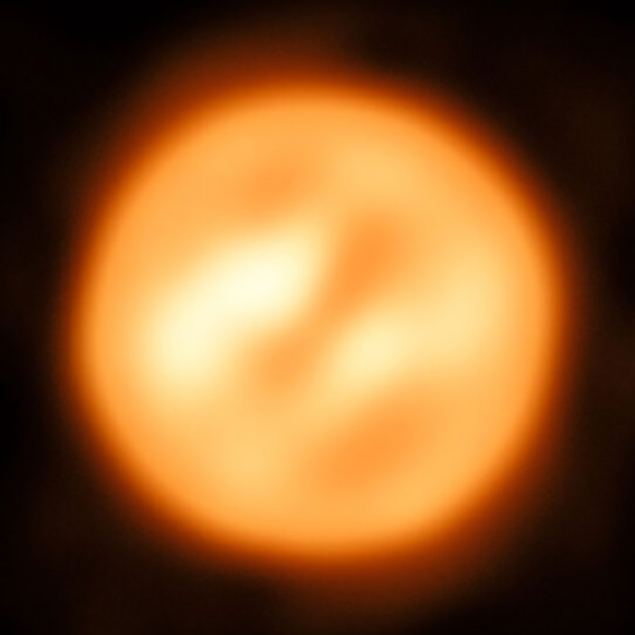
Image credit: ESO / K. Ohnaka
Occultation of Antares
Observers in the western half of the US have the opportunity to see the Moon occult, or hide, the star Antares on the morning of January 8th. It’s best seen from the southern Pacific time zone from around 90 minutes before sunrise, but check an astronomy app for your location.
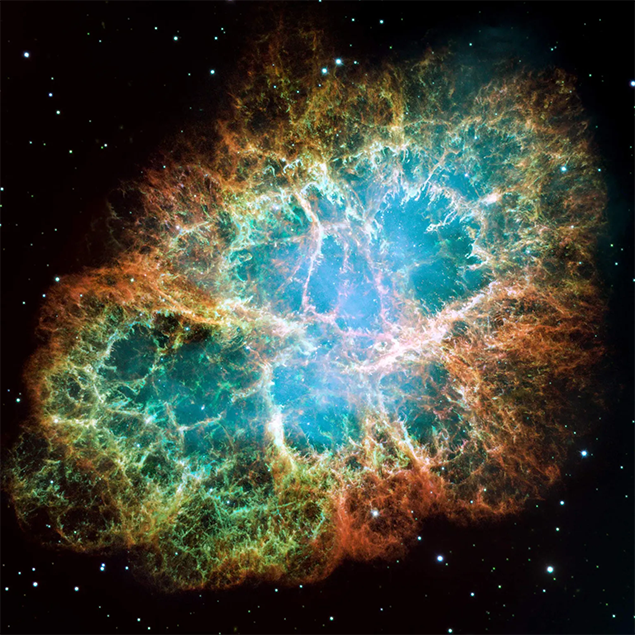
Image credit: NASA, ESA, J. Hester and A. Loll (ASU)
Messier 1 - The Crab Nebula
Conveniently located about a degree from Zeta Tauri, the Crab Nebula is a challenging target for binocular observers. A small scope will show a faint, oval patch, but a larger scope is required to see the shape that gives the nebula its name.
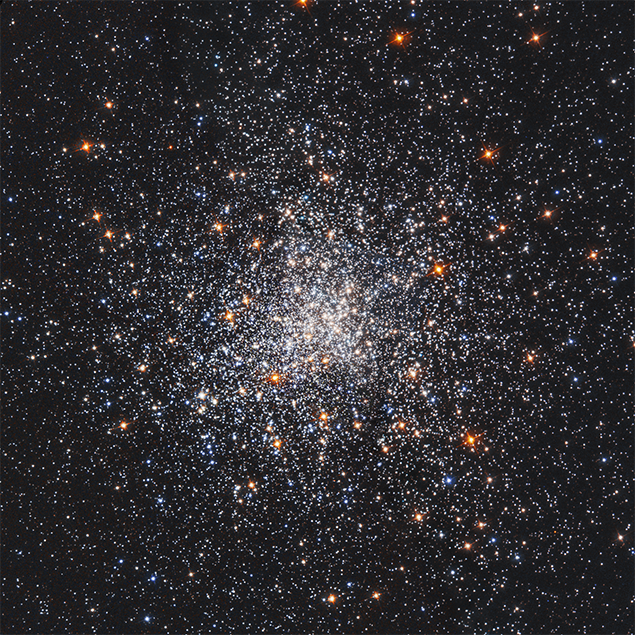
Image credit: NASA, ESA, STScI, F. Ferraro, S. Djorgovski
Messier 79
Winter’s best globular is Messier 79. Easily found just four degrees from Beta Leporis, this cluster has a dense core and can be seen in a small telescope, but requires a larger scope to resolve its outer stars.
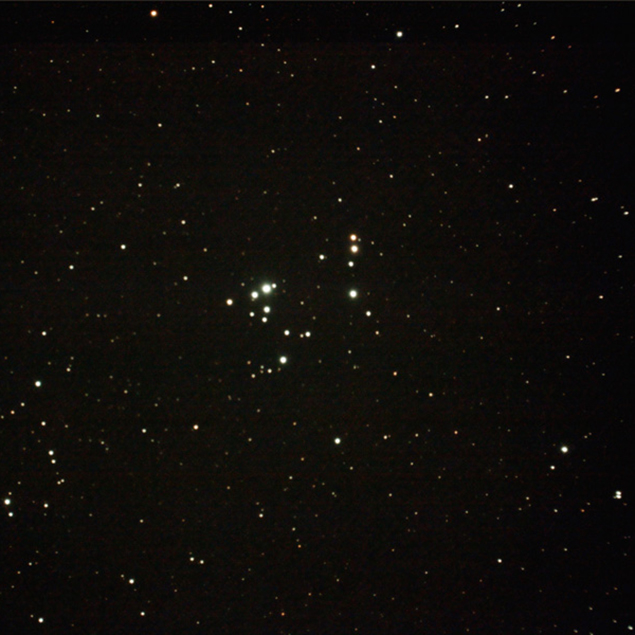
Image credit: Scott Rak
NGC 2169 - The 37 Cluster
A neat star cluster for small telescopes, a magnification of around 100x will show the individual stars forming a pattern that closely resembles the number 37.
STELLAR CONCEPTS
Occultation: An occultation is what happens when one object passes in front of another, hiding it from view. In amateur astronomy, this typically involves the Moon hiding a bright star or planet. Historically, professional astronomers have used occultations of stars by planets to study the planets themselves. For example, in 1977, the rings of Uranus were discovered when a star appeared to blink as it passed behind the rings before being hidden by Uranus itself.







